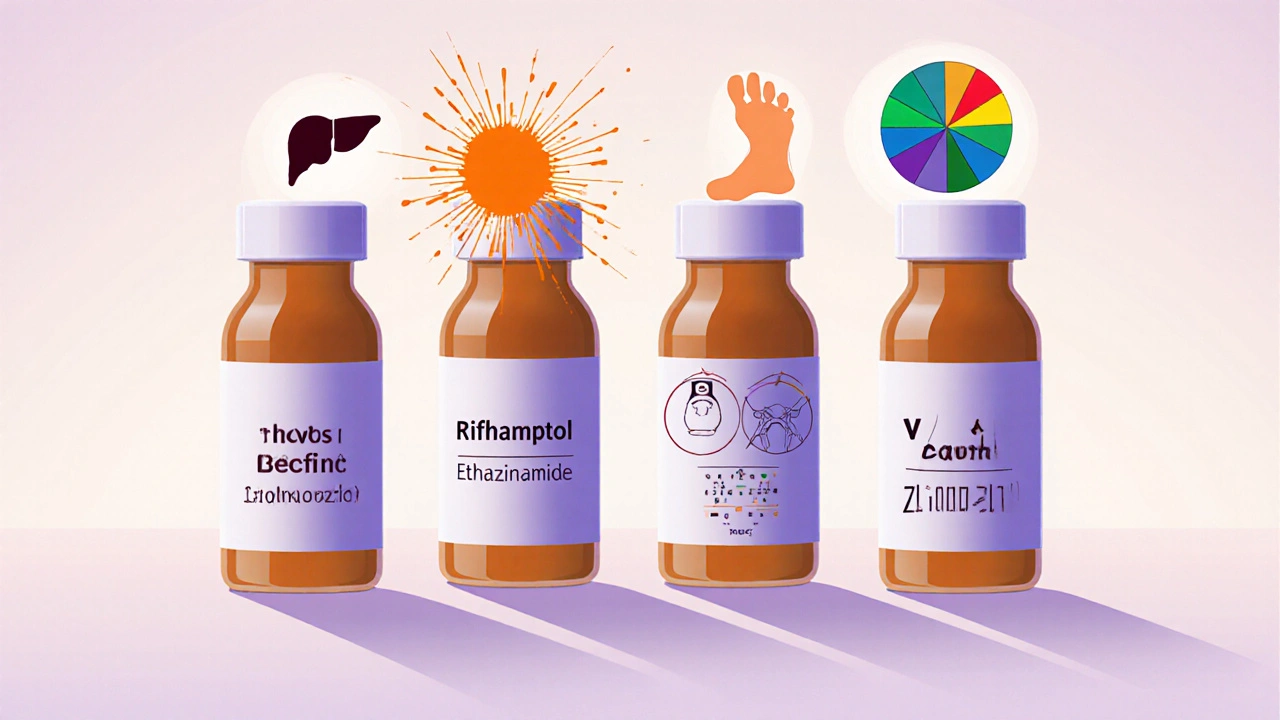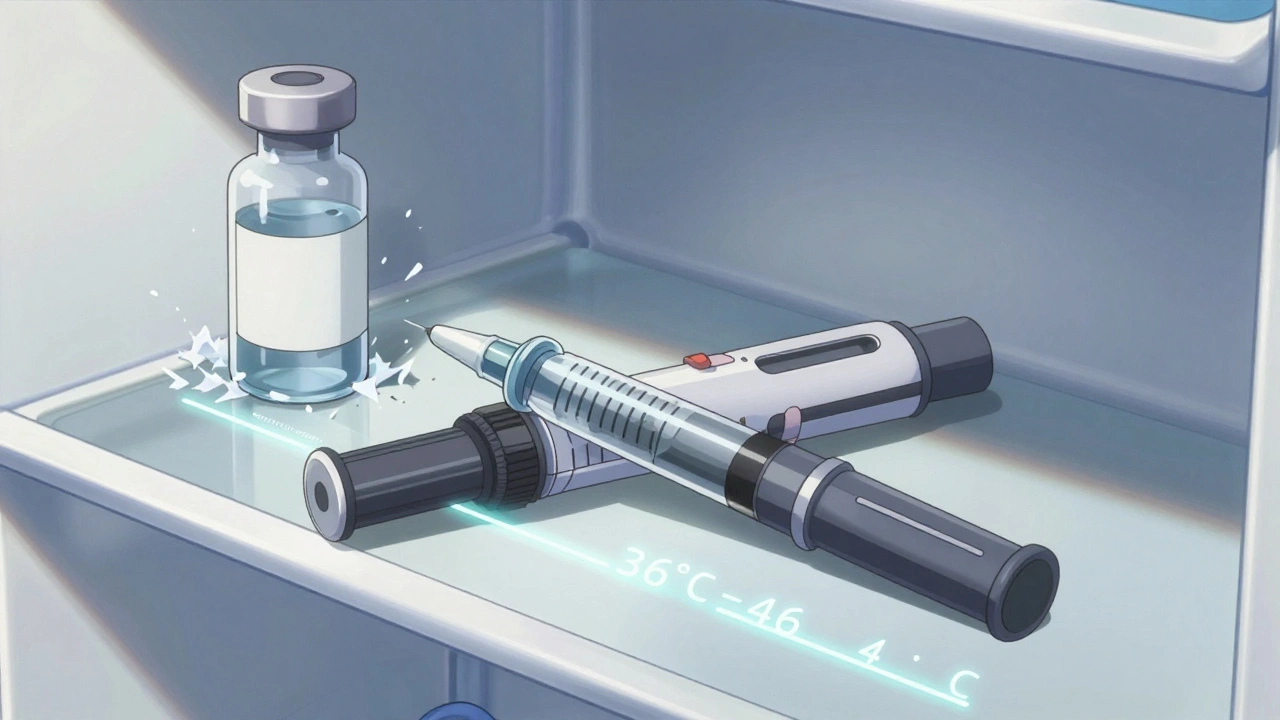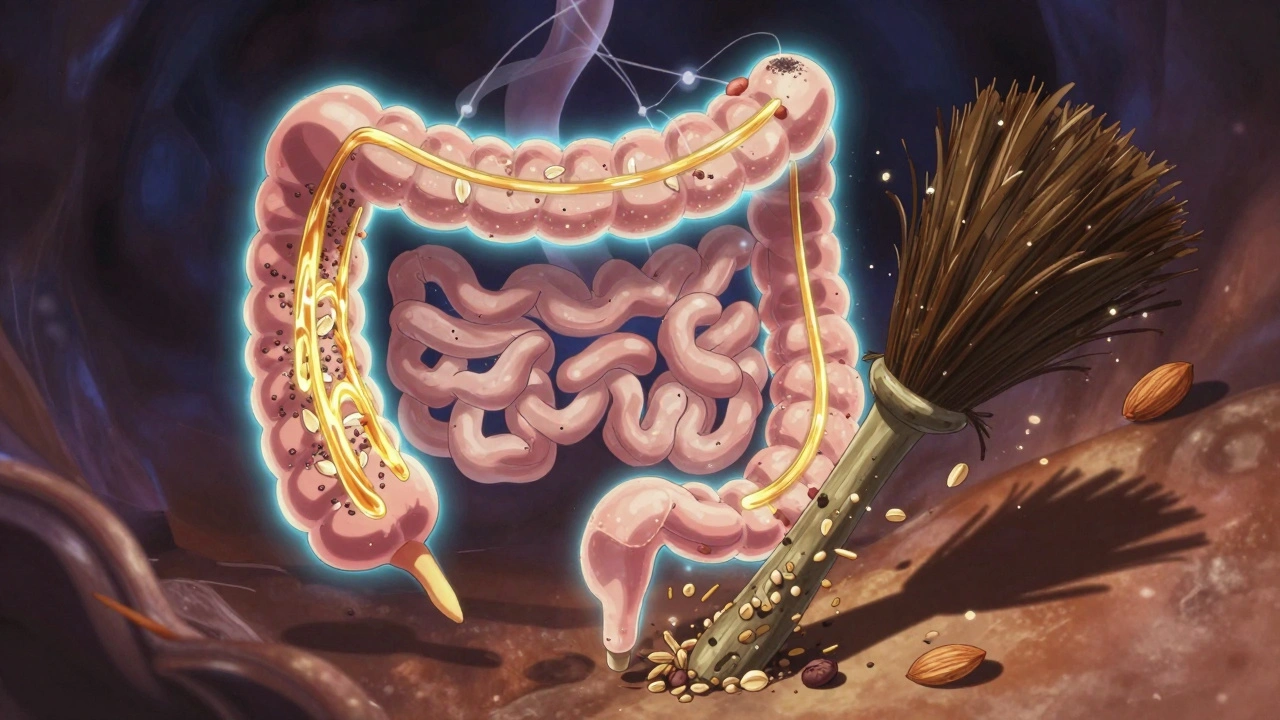Isoniazid vs Alternative TB Treatments: A Clear Comparison

TB Regimen Decision Tool
Patient Assessment
Treatment Recommendations
Recommended Regimen:
Select patient characteristics to see recommendations
Key Considerations:
Recommendations will appear here based on your selections
Side Effect Monitoring:
Monitoring requirements will appear here based on your selections
When treating tuberculosis, Isoniazid is a first‑line bactericidal drug that blocks mycolic acid synthesis in Mycobacterium tuberculosis. It’s been a cornerstone of TB therapy for decades, but clinicians often ask: should I stick with Isoniazid or switch to something else? This article breaks down the facts, side‑effect profiles, and when each drug makes the most sense.
What makes Isoniazid the go‑to choice for TB?
Isoniazid (INH) is cheap, widely available, and works well against drug‑sensitive tuberculosis (TB). A typical adult dose is 300mg daily for six months in the standard 2HRZE/4HR regimen (HR = Isoniazid + Rifampin, ZE = Pyrazinamide + Ethambutol). Its high early bactericidal activity (EBA) means it can rapidly lower bacterial counts in the first two weeks, which is crucial for preventing transmission.
However, Isoniazid isn’t a magic bullet. Resistance can develop quickly if the drug is used alone, and it’s less effective against certain resistant strains, especially multidrug‑resistant TB (MDR‑TB). Moreover, its side‑effect profile-most notably hepatotoxicity-requires careful monitoring.
Alternatives at a glance: Rifampin, Ethambutol, and Pyrazinamide
Every TB regimen includes a cocktail of drugs to cover different bacterial pathways and prevent resistance. The three most common companions to Isoniazid are:
- Rifampin: a bactericidal agent that blocks RNA polymerase, offering strong sterilizing activity.
- Ethambutol: a bacteriostatic drug that interferes with cell‑wall arabinogalactan synthesis, mainly used to guard against early resistance.
- Pyrazinamide: works best in acidic environments, targeting dormant bacilli during the intensive phase.
Each has its own strengths and drawbacks, which become clearer when we compare them directly.
| Attribute | Isoniazid | Rifampin | Ethambutol | Pyrazinamide |
|---|---|---|---|---|
| Mechanism | Inhibits mycolic acid synthesis | Inhibits RNA polymerase | Inhibits arabinosyl transferase | Disrupts membrane energetics in acidic pH |
| Bactericidal vs static | Bactericidal (early phase) | Strongly bactericidal | Bacteriostatic | Bactericidal (acidic environments) |
| Typical dose (adult) | 300mg daily | 600mg daily | 15mg/kg daily | 25mg/kg daily |
| Major side effects | Hepatotoxicity, peripheral neuropathy | Hepatotoxicity, orange body fluids | Optic neuritis (color vision loss) | Hyperuricemia, hepatotoxicity |
| Resistance risk | High if used alone | Moderate, mutates in katG and rpoB | Low, but need combination | Low, but resistant strains exist |
| Pregnancy safety | Category C (use with caution) | Category C (potential teratogenicity) | Category C (monitor vision) | Category C (risk of birth defects) |
| Cost (USD per month, 2025) | ~$2 | ~$5 | ~$4 | ~$6 |

Side‑effect deep dive: What to watch for
Even though all four drugs are essential, each brings a distinct safety profile. Understanding these nuances can prevent treatment interruptions.
- Isoniazid: Liver enzymes rise in 10‑20% of patients; severe hepatitis is rarer but fatal if missed. Routine ALT/AST checks every 2weeks for the first two months are recommended. Peripheral neuropathy occurs when pyridoxine (vitaminB6) isn’t co‑prescribed, especially in diabetics and alcoholics.
- Rifampin: Causes orange discoloration of urine, tears, and sweat-harmless but alarming to patients. Hepatotoxicity is comparable to Isoniazid, so overlapping liver monitoring is key. It also induces cytochromeP450 enzymes, cutting the efficacy of oral contraceptives and some antiretrovirals.
- Ethambutol: Affects the optic nerve; patients may notice red‑green color‑vision blur. Baseline visual acuity testing and monthly follow‑up prevent permanent loss. Stopping the drug reverses most changes if caught early.
- Pyrazinamide: Elevates uric acid, potentially triggering gout attacks. It also adds to the cumulative hepatotoxic load; liver labs must be interpreted in the context of the entire regimen.
When several of these drugs are combined, the overlapping hepatotoxic risk becomes the primary safety concern. Many clinicians use a staggered start-adding Isoniazid and Rifampin first, then Ethambutol and Pyrazinamide after 1-2weeks-to tease out which agent is responsible for any liver enzyme spikes.
Choosing the right regimen: Scenarios and decision rules
Let's translate the data into practical decisions. Below are common clinical scenarios and the recommended approach.
- Newly diagnosed drug‑sensitive pulmonary TB: The classic 2HRZE/4HR six‑month regimen remains the gold standard. Isoniazid and Rifampin provide the bulk of bacterial kill, while Ethambutol and Pyrazinamide protect against early resistance.
- Latent TB infection (LTBI) in a healthy adult: A 9‑month daily Isoniazid monotherapy is still widely used, but a 4‑month Rifampin‑only course or a 3‑month weekly Isoniazid‑plus‑Rifapentine (3HP) are alternatives with better adherence.
- Pregnant patient with active TB: Isoniazid plus Rifampin (without Pyrazinamide) for 9months is acceptable, provided pyridoxine supplementation. Pyrazinamide is avoided due to limited safety data.
- Patient with pre‑existing liver disease: Minimize hepatotoxic drugs. A regimen of Ethambutol+Rifampin+Levofloxacin (or a fluoroquinolone) may substitute for Isoniazid and Pyrazinamide, but requires specialist oversight.
- Suspected multidrug‑resistant TB (MDR‑TB): Isoniazid is ineffective. Second‑line agents like fluoroquinolones, bedaquiline, and linezolid become the backbone; Ethambutol may still be included if susceptibility testing allows.
In each case, the choice hinges on balancing efficacy, safety, patient comorbidities, and programmatic constraints (e.g., drug availability, cost).

Practical checklist for clinicians
- Confirm TB diagnosis with sputum smear, culture, or GeneXpert.
- Obtain baseline labs: CBC, ALT/AST, bilirubin, renal function, and uric acid.
- Screen for risk factors: alcohol use, HIV, diabetes, pregnancy.
- Start regimen with Isoniazid+Rifampin; add Ethambutol+Pyrazinamide after 1-2weeks if liver enzymes stable.
- Prescribe pyridoxine 25mg daily with Isoniazid to prevent neuropathy.
- Schedule liver function tests at weeks2,4,8, then monthly.
- Educate patients on orange body fluids (Rifampin) and the need to report visual changes (Ethambutol).
- Adjust regimen promptly if ALT/AST >3× ULN with symptoms or >5× ULN without symptoms.
- Document regimen changes and adverse events for public‑health reporting.
Future outlook: New drugs and the place of Isoniazid
Novel agents like pretomanid and delamanid are reshaping MDR‑TB treatment, but Isoniazid’s low cost and proven efficacy keep it central for drug‑sensitive disease. Ongoing trials are exploring shorter, all‑oral regimens that may drop Ethambutol or Pyrazinamide, but any change will still need to address Isoniazid’s role in preventing relapse.
Frequently Asked Questions
Can I take Isoniazid without pyridoxine?
No. Pyridoxine (vitaminB6) prevents peripheral neuropathy, especially in diabetics, alcohol users, and pregnant women. Standard practice is to give 25mg daily alongside Isoniazid.
How do I know if liver toxicity is from Isoniazid or Rifampin?
Start the drugs sequentially if you’re worried. If liver enzymes rise after adding the second drug, you can pause it and repeat labs. Re‑challenge one drug at a time helps pinpoint the culprit.
Is a 4‑month Rifampin‑only regimen as effective as Isoniazid for latent TB?
Recent trials (2023‑2024) show 4months of daily Rifampin is non‑inferior to 9months of Isoniazid, with better completion rates. It’s a good alternative when adherence is a concern.
Why is Ethambutol considered less potent than the other drugs?
Ethambutol is bacteriostatic, meaning it halts growth but doesn’t kill the bacteria outright. It’s primarily used to prevent early resistance while the more aggressive drugs take effect.
What should I do if a patient develops optic neuritis on Ethambutol?
Stop Ethambutol immediately and arrange an ophthalmology review. Vision usually recovers if the drug is discontinued early. Substitute another effective agent if the patient still needs a four‑drug regimen.






Comments
Christopher Xompero
October 11, 2025 AT 22:46I can't even begin to describe the sheer terror of seeing those liver enzymes spike! It feels like my heart is doing a marathon while my liver is on fire. The article tries to be calm, but the reality is a drama of death and doubt. Trust me, you don't want to mess with INH without a B6 sidekick.
Irene Harty
October 12, 2025 AT 12:40One must consider the possibility that pharmaceutical conglomerates deliberately obscure the hepatotoxic risks of isoniazid to perpetuate profit cycles.
Jason Lancer
October 13, 2025 AT 02:33Honestly, the piece is a decent rundown but feels like a snoozefest. The side‑effect tables could've used more color.
Brooks Gregoria
October 13, 2025 AT 16:26Sure, the data looks solid, but why trust a regimen that still relies on a drug discovered in the 1950s? Modern therapy should scrap isoniazid entirely. Sticking to outdated protocols is just blind obedience.
Sumit(Sirin) Vadaviya
October 14, 2025 AT 06:20The overview is concise and well‑structured. 👍️ It gives clinicians a quick cheat‑sheet for decision‑making.
lindsey tran
October 14, 2025 AT 20:13Wow, this is super helpful, I love how it breaks down the options! So many ppl forget the vitamin B6 tip.
Krishna Sirdar
October 15, 2025 AT 10:06The choice between isoniazid and its alternatives is not merely a pharmacologic decision, but a reflection of the patient’s whole clinical picture. When a patient presents with active, drug‑sensitive TB, the classic 2HRZE/4HR regimen remains the cornerstone because it balances efficacy and safety. Isoniazid’s early bactericidal activity is unrivaled, quickly reducing bacillary load and thus lowering transmission risk. However, its propensity for hepatotoxicity cannot be ignored, especially in individuals with pre‑existing liver conditions or chronic alcohol use. Adding rifampin to the mix provides a potent sterilizing effect, allowing the regimen to shorten the intensive phase. Ethambutol, while bacteriostatic, acts as a safeguard against emergent resistance during the early weeks of therapy. Pyrazinamide targets dormant bacilli in acidic environments, making it essential for the intensive phase despite its own liver burden. In pregnant patients, clinicians often drop pyrazinamide due to limited safety data, opting for isoniazid plus rifampin for nine months with pyridoxine supplementation. For latent TB infection, a nine‑month isoniazid course is cost‑effective but requires strict adherence and vitamin B6 to prevent neuropathy. The four‑month rifampin‑only regimen offers comparable efficacy with higher completion rates, making it attractive for patients wary of long‑term therapy. When liver disease is a concern, a regimen swapping isoniazid and pyrazinamide for levofloxacin and ethambutol can preserve treatment success while sparing the liver. In multidrug‑resistant TB, isoniazid loses its utility, and the focus shifts to fluoroquinolones, bedaquiline, and linezolid, guided by susceptibility testing. Monitoring remains critical: baseline liver function tests, periodic ALT/AST checks, and vision assessments for ethambutol should be routine. Patient education about orange bodily fluids from rifampin and the need for pyridoxine with isoniazid empowers adherence. Ultimately, the regimen must be individualized, weighing drug efficacy, side‑effect profile, comorbidities, and resource availability.
becca skyy
October 16, 2025 AT 00:00I think the cultural context matters – some communities trust traditional remedies and might shy away from a six‑month drug cocktail.
Theo Roussel
October 16, 2025 AT 13:53The pharmacokinetic interactions, particularly rifampin’s induction of CYP450 enzymes, mandate meticulous review of concomitant therapeutics to avert subtherapeutic exposure.
Erick Masese
October 17, 2025 AT 03:46While the article is thorough, it could benefit from a more streamlined presentation of the monitoring schedule.
Matthew Charlton
October 17, 2025 AT 17:40Great summary! Remember to keep the patient engaged throughout the treatment journey.
Pamela may
October 18, 2025 AT 07:33I've seen countless cases where clinicians ignored subtle enzyme elevations, only to be hit with catastrophic liver failure later. The protocol described is sound, but it lacks an urgent call to action for early detection. We need to train staff to recognize even mild ALT spikes as red flags. Delaying intervention because "it's just a lab value" is reckless. A proactive stance can save lives.
tierra hopkins
October 18, 2025 AT 21:26The checklist is practical and concise, making it easy to implement in a busy clinic.
Ryan Walsh
October 19, 2025 AT 11:20Exactly, a quick visual acuity test before starting ethambutol can catch issues early.
Kiersten Denton
October 20, 2025 AT 01:13Overall, the guide feels balanced and user‑friendly.